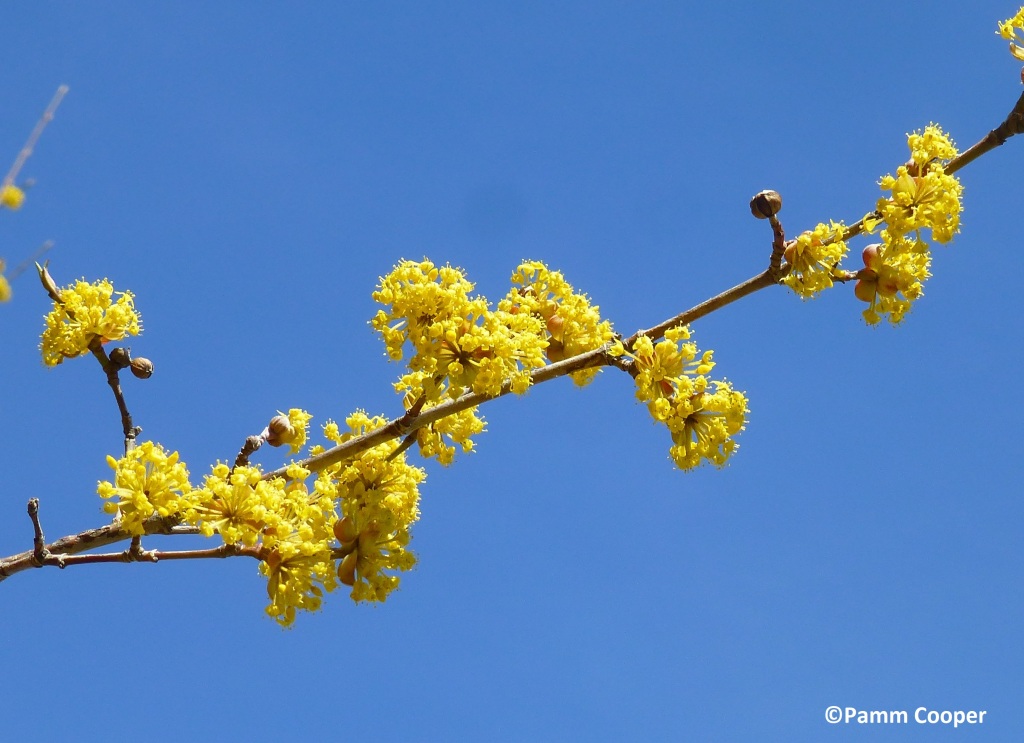
Daffodils,
That come before the swallow dares, and take
The winds of March with beauty.”
— William Shakespeare

In late March there are signs that spring is here. Snow is usually gone, and although no leaves have appeared on our deciduous trees and shrubs, there may be flowers that will provide early bees with their first meal of the year. Red maples bloom early and provide food for many pollinators like flies, bees and beetles that are just emerging in the spring. While some native plants flowering coincides with native bee activity, there are also non- native plants that can be of great value to early pollinators.

Skunk cabbages are our first native bloomers. They can arise in wetlands when snow still covers the ground. Honeybees, native bees, some moths and flies visit these putrid flowers as early as late February and then into March.

One of the first harbingers of spring is the appearance of native Colletes inaequalis ground-nesting bees which can be seen visiting the first flowers of spring. Look for them on native and non- native ornamental willow flowers in late March, and soon after that on native bloodroot.

Non-native Japanese andromeda shrubs, Pieris japonica, can bloom as early as late February and can be an important food source for bees that appear before native willows bloom. There are many varieties, some tall and others more compact and they may have white, red or bicolored, drooping, urnlike flowers. They do best in sunny locations with afternoon shade.

Native bloodroot can form small colonies on sunny woodland edges, and their bright white flowers are often the highlight of the still monochromatic landscape. Flowers open on sunny days and close by night.
Common bluets, commonly called Quaker ladies Houstonia caerulea, are small, blue native wildflowers with four petals and a distinctive yellow center. Many bee species, butterflies and syrphid and other flies visit these low- growing plants for nectar and pollen. They can appear as early as late March, depending upon the temperatures. Flowering can last into early July.

Native red or purple trillium Trillium erectum appears a little after bloodroot, and supports certain moths, bees and flies. Look for it in dry woodland areas with highly acidic soils where there is some sun, especially where there are mountain laurels. It often is found where there are ramps and bloodroot.

Trailing arbutus and round- lobed hepatica are native wildflowers of open woodlands. They are uncommon, or perhaps seem so because they are found in very small areas with specific soil and other site conditions. Pollinators are flies and specialist native bees.

Native twinleaf Jeffersonia diphylla produces its bloodroot-like white flowers as early as March and as late as June. A single flower arises on a leafless stalk above the peculiar joined leaves that resemble wings. These flowers attract bees, especially specialized foragers.

Currants, especially the extremely fragrant clove currant, plus josta berry, a cross between currant and gooseberry, are favorites of bumblebees and other native bees. The clove currant fragrance must be what the island of Zanzibar smalls like as travellers approach it by boat.

Dwarf ginseng Panax trifolius L. is a native woodland wildflower that is only 4-8 inches tall. The airy cluster of small flowers appear in early to late spring and since plants grow in the duff of woodlands, the flower heads, although very small, can help find these little plants.

Among the non-native flowering shrubs that support native pollinators is the Rhododendron mucronulatum ‘Cornell Pink’. This plant blooms in early April before the leaves appear. Many native bees including Osmia spp., Colletes inaequalis and Bombus spp. and wasps visit the flowers. Cornus mas, or Cornelian cherry, is a non-native shrub or small tree whose flowers line the branches before the leaves appear.


Ornamental plants like violas and pansies also attract spring pollinators, and dandelions have a great pollen source for spring and summer bees alike.

Native Amelanchier, also called shadbush and serviceberry blooms in April and attracts many bees and other pollinators. Its delicate racems of white flowers can be profuse and stand out as leaves are not fully expanded. Many specialized bees are supported by this small tree or multithemed shrub.

Star magnolias, Magnolia stellata, bloom in April before leaves are out. These trees support many pollinator species and butterflies like spring azures and tiger swallowtails that are out in early spring.

There are many other plants for pollinators in early spring- daffodils, crocus, currants to name a few. As I hike around at this time of year, I take note of which flowers the most pollinators are attracted to, and I may decide to add some of these to my own gardens. I also stop to enjoy all the new colors and textures coming into the landscape. I appreciate Algernon Charles Swinburne’s comment-
“Blossom by blossom the spring begins.”
Pamm Cooper
























































































































